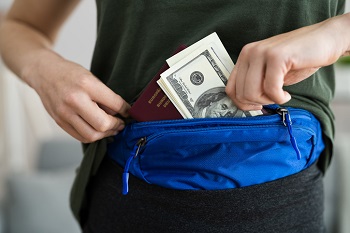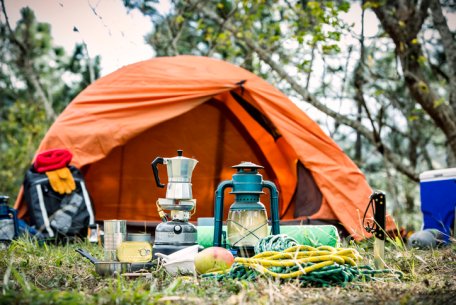Ultimate Guide to Planning Your Perfect Spring Break: Destinations, Budget Tips & More
Get the most out of your spring break with these essential tips! From choosing the perfect destination and saving on travel costs to packing smart and staying safe, learn everything you need to make your spring getaway unforgettable.
6 Ways to Make the Most Out of Your Spring Break
“Spring break” is the much-needed time off between winter and summer that gives students (and teachers) a breather before the final stretch of the school year. While the specific week it lands on varies from school to school, “spring break” usually happens around Easter, sometime in March or April. Whichever week your break falls on, it symbolizes the homestretch to the end of the school year and into the joyous days of summer. This break is more than just time off from school, it’s giving you a mental break from all of your tough studies and allows you to relax and enjoy time off. You deserve it, after all.
With the world being so much more globalized, your options to get away are greater than ever. But having so much to choose from can feel overwhelming. Not sure how to plan your trip? Here are our suggestions to make your spring break the most “you” yet:
1. Choosing the Right Destination
The beauty of traveling is that there is so much world to see, and chances are you’ll always end up somewhere beautiful and charming in its way. It’s just a matter of finding a destination that fits your preferences. Do you prefer warm weather or snow? Local or flying far away? What’s your budget? These are the big considerations that will help you narrow down the next step. The most important thing is finding and planning a vacation that you are going to enjoy. Here are some examples of desirable, lesser known, destinations:
Lake Louise: Canada
For those who like the cold temperatures, Lake Louise is a beautiful glacial lake in the Canadian Rockies, 5,680 feet above sea level. In the springtime, the cold temperatures can reach sub-40. In March, Lake Louise is still coated with snow, and those who love an active vacation can still get the most out of the last shreds of winter by visiting the open ski slopes. Reserve your cabin for a ski vacation, where you can spend your days skiing, practicing photography, and enjoying Canadian meals for this active getaway.
Pacific Coast Highway: Canada, United States, and Mexico
The U.S. Route 101 is most famously known for its West Coast shoreline views. This 1,500-mile road flows from Canada through California to Mexico, all on one stretch of highway. The beauty of this highway adventure is that you can road trip in any way that best suits your needs: cost-effective on a budget, or splurge at in-town stops.
For a more “road trip” feel, we suggest you rent an RV to drive and live in for the week and do everything on your schedule. No lodging is required since you are in it all the time! You also don’t have to do 1,500 miles, making this destination very flexible to meet your needs.
Types of RV rentals include:
- Traditional: Think of a rental RV company like a rental car company. It is similar in the sense of renting from larger-named companies that own masses of RVs that are specifically made for rental for travelers. El Monte and Cruise America are two of the big-named rental companies.
- Peer-to-peer: Similar to home-rental sites like Airbnb, these rentals are platforms that connect RV owners with potential RV renters. In return, this becomes a more inexpensive cost as well as giving you more variety in styles and sizes. Outdoorsy and RVshare are trusted sites to help you find your fit.
Prices may vary depending on the duration of the trip, and it’s helpful to price compare with the different companies to find better deals. Similar to hotel and rental home companies, RV rentals may have a minimum night requirement, so it’s important to do your research when searching for your perfect RV.
Early spring is a great time to take this trip since temperatures are still mild. Explore the quaint small towns that you’ll stumble upon during this trip, or visit the bigger known sites, like the Santa Monica Pier in California. Go as far north or south as your timeline allows.
Charleston, South Carolina
For those of you on the East Coast, consider Charleston, SC: a charming city with cobblestone paths and gas lamps, it’s the definition of Southern charm. It is shaded by grand oak trees and has classic lighthouses and mansions with wrap-around porches that you find in movies. While everyone is indulging in the stereotypical, overdone locations like Mexico for their spring break, you can get all the warm weather and more in Charleston. Charleston is your stop for those looking for a vacation destination with plenty of sites and great food. For a bonus, this city is right on the ocean, so you can spend a day touring the town, and the next day listening to the waves on a beach.
2. Budget-Friendly Travel Tips
Timing is Everything!
Vacations can get expensive, especially for students-- but that doesn’t mean you have to sacrifice the quality of your spring break. Although you’re traveling during one of the busiest times of the year, there are many ways you may be able to save money: one easy tip is to try booking your vacation on certain days of the week. According to a survey by Expedia, which used data and information from 15 billion flights across 490 airlines done by the Airlines Reporting Corporation, generally, the most cost-effective day to book your flights is Sunday.
The data showed that over the past 3 years, Sunday has been the most economically friendly day to book flights. Consumers who purchased flights on Sundays instead of Fridays save around 5 percent on domestic and international economy-class flights. Consumers may also save about 7 percent on domestic business class flights and nearly 24 percent on international business class flights. Moral of the story? Shop around and explore your booking options on several days of the week to get the best deal.
Booking Flights
Speaking of flights, Expedia also recommends you book your trips well in advance. Booking anywhere from 28 to 35 days before your desired domestic flights can save you 10 percent on average compared to booking zero to two weeks before you travel.
However, don’t get too zealous: be cautious about booking too far in advance. Historically speaking, booking earlier than 113 days out for domestic flights has been more expensive. Make sure you hit that sweet spot!
International Flights
Spring break is known for international travel, but sometimes the rules of booking and saving don’t apply here the same way they do for domestic flights. Booking internationally becomes a little different when talking about savings and timing. Expedia suggests booking 6 months before international flights to help save about 10% (on average) compared to those who wait until 2 months or less.
Use Reward Points
Did you know you can also pay for your vacation using credit card points? Many major credit card companies now offer purchase points in the form of flight, hotel, and lodging rewards. Or start collecting and using frequent flyer miles. You can also try contacting the hotels directly instead of booking through third-party sites to avoid any transaction fees. Make sure you check your credit card’s rewards system to see if that applies.
Ride Sharing and Deals
Looking to get a ride from the airport to your hotel? Save on pricey airport fees by booking a rideshare off the beaten path. Ride fees are cheaper in less popular areas. For finding an activity to do or a good restaurant to eat at, try taking advantage of any discounts and deals the area you’re visiting has to offer, like looking for coupons.
Deals don’t just have to be for one traveler. Traveling with someone else, or in a group, may help you find group rate discounts. If no discounts are available, traveling with more people will generally help your expenses by splitting the costs of things like hotel rooms and car rentals.
3. Packing Travel Essentials
Okay: you cleared your calendar, you’ve booked your flight or rental car, and you’ve got the destination ready. Now: the packing.
Packing can be overwhelming, especially if you wait until the last minute to get everything together. We suggest that about a week before your trip, write a tailored travel list. Make sure you don’t forget what we call the “ultra basics:” the things that are so every day, you may forget about them! Like underwear, socks, toothbrushes, cell phone charger, glasses or contacts, and valid forms of ID. These are things that we tend to take for granted since they are so common!
But also make sure you pack for the weather to where you’re going: such as sunscreen and swimwear for warm-weather vacations, or sweaters, hats, and gloves for colder trips. We also recommend that you check with your local and destination airports for any specific travel requirements.
Besides the usual, make sure you check for these important travel items you may need:
- International travel adapter: Different countries have different outlets, meaning the normal charger that you use for phones and other devices may not be compatible on your next trip. It’s important to carry a travel adapter for international vacations to ensure you can use your electronics.
Not sure if you need a travel adapter? Then we suggest purchasing an external battery pack for your phone so you can charge on-the-go. This is especially useful for shorter or backcountry trips.
- First aid kit: Travel first aid kits are important in case there’s ever an emergency, especially if you’re unfamiliar with the area. Things like band-aids, EpiPens, antibiotic cream, and medicine should be fully stocked and taken with you. Don’t forget to stock and bring any of your prescriptions.
- Umbrella: We got you with this one, huh? Bet you didn’t expect to see this on the list! This may seem simple, but if you’re going to a touristy area and it starts raining, the last thing you’d want to do, especially on a tight budget, is to purchase an umbrella when you already have one. The same goes for ponchos. If you can stock up on them before you travel, it’s great to have them handy.
- Cash: Credit cards are much of today’s world, it seems like cash is rarely kept on your person. However, not every restaurant or excursion will accept cards, and you may be stuck paying expensive ATM fees to get cash. Always carry some cash on you in case of an emergency. We recommend an amount that could cover a basic emergency: a cab, hotel room, or tow truck fee amount. If you’re going abroad where there’s a different currency, make sure to exchange your USD for whatever currency the country accepts.
Okay, now you’ve arrived at your destination. What are some of the best tips for once you’re there?
4. Safety Precautions
The point of this vacation is to relax and have fun—but don’t forget to practice basic safety precautions, especially in a tourism center. It’s good to be vigilant and aware of your surroundings, especially when traveling to a new destination.
- Safeguard your belongings: It’s important to keep your important documents either with you or locked in the safe locked in your hotel room. Be aware of pickpocketing or other public crimes, and always secure or hold onto your belongings tightly.
- Get your routine check-up: Before you travel, schedule an appointment with your healthcare provider to discuss your travels and ask them any health questions you may have. Stay up-to-date on your routine vaccine.
- Consider health insurance: Planning for unexpected health and travel issues is important, in case anything happens to you while away. If you’re traveling internationally, see if your health insurance covers medical care. If they do not, consider travel insurance that covers health care and emergency evacuations.
- Avoid risky situations: The best way to treat a risky situation is to prevent it altogether. Try to avoid putting yourself in a compromising situation to begin with. If you notice that there are dimly lit streets, stay away from those areas and remain on busy streets. Take cabs or rideshare cars when you can. Check local tourism reviews for places to avoid or use with caution. Most travel guides also recommend you travel with a buddy.
- Follow local laws and customs: If you’re unfamiliar with the area, it’s good to do some research. What are the social norms and practices in the city or country you’re visiting? What rules do they have there that they don’t have in your hometown? Familiarize yourself before traveling.
- Add emergency contact information: Your phone allows you to add emergency contacts. This way, in case of a serious emergency, your phone will know to contact those on your list.
- Fill out your medical ID: Your phone has something called a “medical ID,” in which you fill out important information about yourself, such as blood type, allergies, and any medication you may be on. You can also program your phone to have an “Emergency SOS,” which will allow you to call 9-1-1 with the touch of a button, regardless if your phone is unlocked or not, and even if you have no service.
- Stay connected: Whether you’re solo traveling or traveling with friends, don’t forget to stay connected with those who are not on the trip with you, such as family and other friends back home. You can have them track your location with iPhone’s “Find My Friends,” and keep in contact by utilizing communication tools like messaging apps, and social media. For International trips, find what your calling options are by speaking with your phone network provider. Social media messages, such as WhatsApp and Facebook Messenger, are also great for staying connected when there’s Wi-Fi.
5. Health and Wellness While on Vacation
Part of what makes spring break such a relief is that it’s usually the week after exams. You’re coming off peak stress and heading into relaxation mode. But do you know what can also happen after peak stress? Sickness.
So, to make sure you don’t get under the weather while you’re on your trip, we recommend you consider these health and wellness tips to stay feeling your best:
Some suggestions include:
- Stay hydrated: Drink plenty of fluids such as water or sports drinks with balanced electrolytes, especially if you’re going somewhere with hot temperatures. Generally speaking, combining regular meals with adequate water intake can help maintain a water and electrolyte balance. However, if you want to enjoy sipping pina coladas or Mai tais beachside on your trip, just make sure to eat plenty of food beforehand, balance it out with water, and maybe try to limit the amount of alcohol you drink
-
Get enough sleep: If you plan on waking up early and are planning a busy day, it’s important to get plenty of sleep so you feel energized. During your Spring Break, try taking a relaxation day, whether it’s by the pool or cozying up by the fire.
-
Practice sun safety: Wear sunscreen or stay in shaded areas if you’re visiting a place with a high UV index. But although it may seem obvious for those in the sun to practice this, it’s also just as important for those skiing in the mountains to keep themselves lathered in sunscreen. The American Academy of Dermatology recommends choosing sunscreens with a broad spectrum, meaning it protects your skin from ultraviolet A and B rays, both of which can cause cancer, one with an SPF 30 or higher to protect you from sunburn, and one that’s water resistant from anywhere for up to 40 to 80 minutes. Many tourist areas will have sunscreen for sale. However, if you want to avoid the price surges, try packing it with you.
-
Familiarize yourself with local health risks or precautions: Each destination may have a set of rules and regulations in place regarding how they follow wellness safety. Check with websites like CDC.gov or international travel guide sites to determine what is best for your area.
6. Explore Local Culture
If you’re traveling somewhere new, you’re probably excited about immersing yourself in the culture. Each destination is unique in its own way. Here are some ways you can enjoy the new culture:
- Try local cuisine: For anyone who loves to expand their taste palette, see what the famous, “must try” foods are in the area that you’re visiting. You can find these by asking local guides, websites, or Google reviews.
- Visit cultural landmarks: If sightseeing is on the agenda, snag some pictures of famous landmarks at your destination! While the landmark itself is camera-worthy, try including yourself in the photos (to prove to your social media that you were there!) If you’re traveling alone, you can ask someone to take your photo. If you’d rather, do it by yourself, bring a tripod or selfie stick with you. The same suggestions can be for if you want to take a group photo. To find the coolest sites and landmarks in the area you’re traveling to see if there are any guided tours. Big travel sites also can hook you up with cool excursions.
- Respect the destination’s culture: While it’s a vacation for you, it’s also the locals’ everyday lifestyle. Understand that there might be cultural norms and customs you should follow to ensure a positive and enriching travel experience.
Traveling is exciting and scary all at the same time, but that’s what we’re here for. If you’re looking for more tips, have any questions, or want any inquiries, reach us at AXA Partners US. We’re here to guide you through all that traveling has to offer.
Welcome to the AXA Assistance USA Travel Insurance Blog by AXA Assistance USA Travel Insurance. The 6 Best Spring Break Tips 101 Blog is intended to provide you with entertaining and educational information of a general nature. The articles are for editorial purposes only and are not intended to replace the advice of a qualified professional. Please contact AXA Assistance USA if you have any questions. AXA Assistance USA, Inc.© 2023 All Rights Reserved.

Get AXA Travel Insurance and travel worry free!
Travel Assistance Wherever, Whenever
Speak with one of our licensed representatives or our 24/7 multilingual insurance advisors to find the coverage you need for your next trip Get an instant quote!



